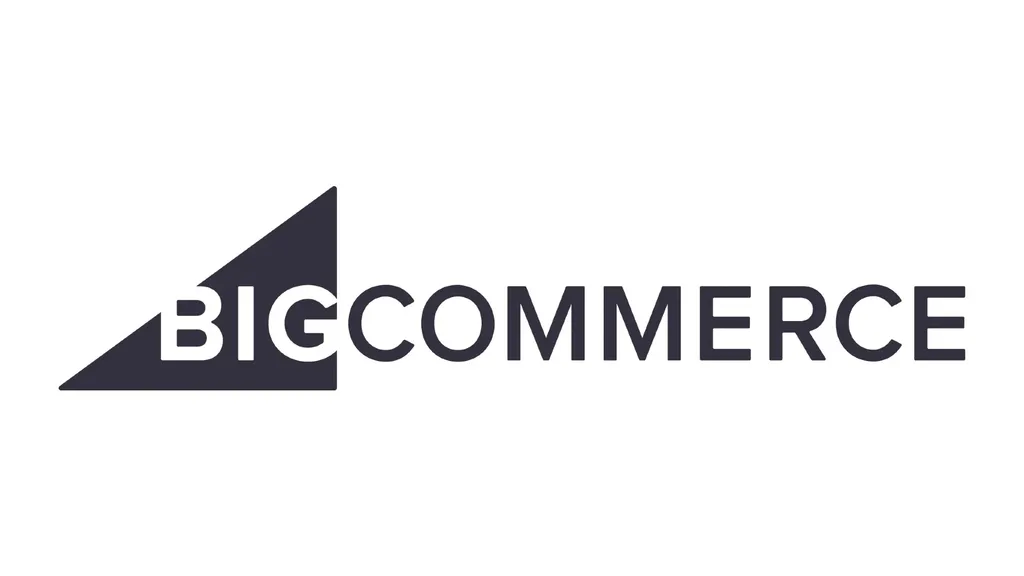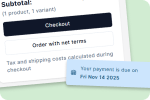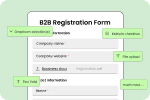B2B Ecommerce has become a strategic part of modern B2B. Despite its clear benefits in speed and scale, selling online does not always guarantee success. It takes a solid grasp of operations, strategic foresight, cross-team coordination, and continuous improvement.
To facilitate your transition into digital commerce, we will walk you through essential B2B Ecommerce best practices and tips in the following guide.
>> Read more: B2B Ecommerce Detailed Guide: What It Is and How to Start
Understanding B2B Ecommerce
Before getting into best practices, it’s important that you understand the basics of B2B Ecommerce and industry trends. This section explains how the model works.
What is B2B Ecommerce?

B2B Ecommerce, or business-to-business Ecommerce, is the practice of selling goods or services between companies through digital platforms. Simply put, the transaction concerns two parties operating as businesses. And in contrast to the traditional B2B, which relies on manual orders and sales reps, the interaction now happens online via company websites and online marketplaces.
B2B Ecommerce vs B2C Ecommerce
Another notion that is often misunderstood with B2B Ecommerce is B2C Ecommerce. This is because B2B and B2C Ecommerce both involve online transactions. The two models also share tools like digital catalogs, payment gateways, and marketing automation.
The key factors that set B2B Ecommerce apart, however, are purchasing complexity, the target audience, and order volume. B2C typically features shorter sales cycles, while B2B requires approvals, negotiations, and repeat orders. The B2C buyer usually shops alone and buys items for personal use. On the contrary, in the B2B environment, one side is often a wholesaler, manufacturer, or distributor, while the other is typically a retailer or another business buyer, who often orders in bulk.
The Growing Importance of Digital in B2B
Digital transformation in B2B is accelerating, especially after the global disruption caused by COVID-19. Convenience and self-service options are now expected, and buying online has become the new normal for both suppliers and business buyers.
In fact, studies by McKinsey show that out of thousands of B2B decision-makers surveyed, over 70% are comfortable making large purchases online. This is a huge shift compared to just a few years ago, when in-person sales dominated the space.
Another notable insight is that most B2B customers expect personalized experiences. And business-to-business Ecommerce appears to meet those expectations more effectively. Most digital platforms now offer a host of customer-centric tools, such as custom pricing, account management, real-time inventory, and quick reorder options. Buyers are able to receive updates, track availability, and place repeat orders whenever and wherever they are, and in a frictionless manner.
On another note, thanks to such digital capabilities, wholesalers who adopt the B2B Ecommerce model not only benefit from improved operational efficiency but also see faster order cycles, an increase in revenue, and stronger customer retention. This gives them a lasting competitive edge in an increasingly digital marketplace.
>> Read more: 15 B2B Ecommerce Benefits For Wholesale Businesses
B2B Ecommerce Statistics

Image source: International Trade Administration
Below are some astonishing statistics about B2B Ecommerce:
- The B2B Ecommerce market is expanding at a 14.5% CAGR, outpacing traditional B2B models.
- Global B2B Ecommerce is projected to hit $32.11 trillion in 2025, growing from $28.08 trillion in 2024.
- Over 90% of B2B buyers prefer a digital buying experience, with a strong expectation for self-service and personalization.
- Companies with advanced digital commerce strategies report 2x higher year-over-year Ecommerce revenue growth compared to less effective counterparts.
- Despite rapid growth, only 35.7% of B2B buyers report a fully satisfactory digital purchasing experience.
6 Common Types of B2B Ecommerce Businesses
There is a fundamental difference between the types of B2B sellers based on how they source, distribute, or provide value. Below are 6 common B2B business models in digital:
- Manufacturers: Make and sell goods directly to businesses like retailers or other manufacturers. Common examples are Bosch, Intel, and General Motors.
- Wholesalers: Buy products in bulk from manufacturers and resell them to smaller businesses. Think of Amazon Business, Alibaba, X-Cart, and Made-in-China.
- Distributors or 3PLs (Third-Party Logistics): Handle storage, shipping, and delivery for brands. Companies use them to outsource logistics. Notable 3PL examples include Shopify Fulfillment Network, EasyShip, and National Fulfillment Services.
- B2B2C Ecommerce: Sell to other businesses that then sell to consumers. This model blends B2B and B2C in one process.
- B2B Marketplaces: Platforms where multiple sellers list products for businesses to buy. They connect buyers with suppliers.
- Services (Software-as-a-Service or SaaS): Offer software tools to help other businesses run better. Popular providers are Adobe Creative Suite, Salesforce, and Constant Contact.
How Does B2B Ecommerce Work?

B2B Ecommerce revolves around the core online platform or digital storefront. This platform acts as the central hub for product discovery, order placement, and transaction management.
Businesses, such as manufacturers, wholesalers, and distributors, use the platforms to upload product catalogs, pricing structures, and inventory levels. The buying business will then browse the offerings, negotiate pricing (if applicable), place orders in bulk, and manage fulfillment and reordering. Every stage of the procurement process happens within the same system.
What Are The Steps In The B2B Buying Or Purchasing Process?
B2B buying is more complex and structured than the direct one-touch B2C one. Here comes the breakdown of the key steps:
Step 1: Problem or need acknowledgment. The customer becomes aware of a problem, considers potential solutions, and holds informal internal meetings.
Step 2: Product or service specifications. During the research and planning phase, they will define clear requirements and outline key considerations. The key criteria in assessment are function compatibility, pricing, compliance, scalability, and return on investment (ROI).
Step 3: Customer researching supplier and product. After listing out requirements, B2B buyers will then search for available solutions. Methods of discovery can be via word-of-mouth referrals, supplier directories, or targeted Google searches. You, as a B2B seller, must make sure your sites are SEO-optimized and content-rich enough to appear on the search result pages.
Step 4: Product/service selection. At this point, the buyer now has a list of potential vendors and products. They will refine the search on the supplier’s website, download specs or catalogs, and generate a quote or purchase order (PO). The decision-making team may now have a vendor in mind.
Step 5: Approvals. The buyer creates a PO and sends it to internal stakeholders for approval. This can take approximately a few days to several weeks due to multi-level sign-offs and budget validations within internal procurement workflows.
Step 6: Purchasing and eProcurement. The buyer sends the approved PO to the vendor for fulfillment. The vendor confirms the order, initiates delivery, and fills the order based on agreed-upon terms.
>> Related topic: B2B Ecommerce for Manufacturers: A Comprehensive Guide
B2B Ecommerce Best Practices

Those are the basics of how B2B Ecommerce functions. In this section, we will suggest some B2B Ecommerce website best practices to give you an actionable framework before launch.
9 Comprehensive Checklist before Starting Your Project
Before launching a B2B Ecommerce website, it’s important that you have carefully considered the following core areas:
- Business strategy: This step is about defining goals and audience. Key factors to consider include pricing models, customer types, and order volume.
- Platform and technology: The next best practice involves choosing the right platform. Going online means dealing with hosting, security, and integrations. For B2B Ecommerce, you should enable quotes, custom pricing, and ERP sync.
- Site structure and design: This is how you would organize pages and navigation. A well-designed layout is one that prioritizes usability and aligns with how B2B buyers search and shop. Use clear CTAs, faceted search, multi-user accounts, mega menus, and quick reorder buttons. Mobile-friendliness is also a must when setting up your online store.
- Content and resources: Here, you need to provide clear information and helpful materials to guide the buyers. Such resources are product descriptions, spec sheets, FAQs, and manuals. Core pages to include are Product Catalog, About Us, and Contact.
- B2B-specific function: Selling B2B products requires B2B-ready features. Essential ones include quick reorder, bulk pricing, quote requests, and account-based access.
- Marketing and outreach: In place of the traditional sales rep, you will need to build SEO, email nurturing, and PPC strategies to attract leads.
- Analytics and optimization: Track site usage, buyer behavior, and sales performance to optimize UX and conversion funnels.
- Customer support and relationship management: Strong service is key to B2B success. This is especially true in a long-term buyer-seller context. Make sure you train your support team and invest enough effort into onboarding and CRM tools.
- Legal and compliance: Set up and regularly review tax, privacy, and return policies. Considering the B2B contract and data protection aspect is essential.
How to Get Started with B2B Ecommerce
It can be frustrating when starting any new project, not to mention one as complex as B2B Ecommerce. Below are some B2B Ecommerce best practices and tips for efficiently kick-starting your launch:
- Set a deadline and list associated tasks. Some effective models include Gantt charts, Kanban boards, or weekly sprints.
- Plan how many tasks to complete per day to launch by the due date. For example, divide your 30-day timeline into 4 weekly goals and assign 3–5 key tasks per week. You can refer to project management tools like Trello, Jira, or Clickup.
- Make a plan that works for you. Different businesses have different resource levels. In addition to referencing available B2B Ecommerce checklists, you can adapt timelines to your own schedules and team capacity.
Best B2B Ecommerce Platforms to Pick
As previously mentioned, picking the right platform is a part of your core B2B strategy. The following platforms are highly recommended for their robust B2B capabilities and scalability.
Shopify Plus

Shopify is one of the leading B2B Ecommerce platforms globally. The platform offers different plans, among which is Shopify Plus. This enterprise-level plan is designed specifically for high-growth and high-volume businesses. Its feature set is loaded with B2B capabilities, such as custom pricing, bulk ordering, advanced API access, and company account management.
Another reason why Shopify Plus stands out is migration, extensive third-party app integration, and ease of use. This is great for wholesalers or manufacturers looking for a solution to expand online without rebuilding their entire backend.
The core consideration is its high pricing, which begins at $2300/month for a 3-year term or $2500/month for a 1-year term. However, this is not the actual cost. Besides the standard license charge, there are extra costs for app subscriptions, custom development, payment processing fees, and potential migration costs. Businesses also have to incur a monthly variable fee of 0.25% of revenue if monthly sales exceed $800,000. Overall, the total cost of ownership can be up to $40,000 per month.
Considering these factors, Shopify Plus is typically recommended for enterprise-level B2B wholesalers and manufacturers. It’s also excellent for global brands with complex catalogs, high AOV, or multi-store operations.
>> You may need: 12 Best Wholesale Apps for Shopify in 2025
Adobe Commerce

Built on Magento architecture, Adobe Commerce is widely known for its flexibility and scalability. Among the outstanding features are headless commerce, multi-store management, and dynamic product catalogs. B2B functions include company accounts, negotiated pricing, quick order forms, and custom catalogs.
Despite being suitable for businesses of all sizes, Adobe Commerce is most commonly chosen by mid-market and enterprise-level businesses. The exact pricing plans are not public on the official site, but they are estimated to be around $22,000 to $40,000 annually for mid-sized use cases, depending on features and hosting. Regarding enterprise-level deployments, the total cost can go up to $125,000 per year due to higher Gross Merchandise Value (GMV) and the level of customization.
BigCommerce

BigCommerce, despite its strong B2C focus, also offers a full suite of B2B functions. B2B essentials like customer groups, custom pricing, quote management, and tax-exempt options are natively available in this cloud-based platform. The platform also supports third-party apps and enterprise-level plans for more advanced B2B customization and scalability needs.
WordPress/WooCommerce

The list of the best platforms for B2B Ecommerce should not miss out on WordPress/WooCommerce. Unlike fully managed platforms like Shopify or BigCommerce, WordPress/WooCommerce is not hosted out of the box, but it’s highly customizable and open-source.
WordPress/WooCommerce also boasts a robust and extensive plugin ecosystem. Here, one can find and install a host of third-party apps for selling B2B, free and paid. Some great plugins are B2BKing for tiered pricing and subaccounts, Wholesale Suite for wholesale roles and order limits, and WooCommerce Wholesale Pro for quick order forms and product visibility control.
In terms of pricing, WooCommerce itself is free, as is WordPress, which powers it. However, you will need to pay for hosting, domain, and security. There are also additional costs for premium plugins (typically $50–$200 per year) and themes ($0-$129 per year). Total expenses can be from $50 to $300+ per year.
6 Tips to Drive Success After Go-Live
That’s about getting your B2B Ecommerce site off the ground. Here are some practical tips for optimizing your store post-launching.
1. Set up a regular meeting rhythm
The purpose here is to maintain alignment and keep the momentum going. Weekly or biweekly check-ins are usually enough to stay updated and ensure everyone is on the same page.
2. Measure, analyze, and report
Consistent analysis helps reveal where your site performs well and where it falls short. The key measuring metrics are traffic, AOV (average order value), conversion rates, and bounce rates. In addition to your platform’s native dashboard, you can use Google Analytics and Hotjar. These tools excel at monitoring performance and spotting areas for improvement.
3. Gather customer feedback
Your B2B buyers are often power users. Ask for feedback via post-purchase emails or account reps. Real user input helps spot friction points that analytics can’t reveal.
4. Keep learning your platform
Don’t stop at the launch. Dive deeper into your Ecommerce platform and explore new features, integrations, or workflows that could improve efficiency or UX.
5. Stay updated and upgrade
Regular updates improve performance, security, and feature access. If you’re on a SaaS solution (like Shopify Plus or BigCommerce), many upgrades are automatic. But still, stay informed and make use of new tools as they roll out.
6. Look around for inspiration
Benchmark your store against successful B2B sites. See how others handle navigation, product pages, content, or CTAs. Don’t forget to adapt smart ideas to your site.
The 4 Pillars of a Successful B2B Ecommerce Strategy

Behind every high-performing B2B online store is a well-defined strategy. To establish a scalable and customer-centric B2B Ecommerce business, keep in mind the following pillars:
Pillar 1: Ecommerce Objectives
Objectives play a central role in shaping your B2B Ecommerce strategy. It helps align teams, measure progress, and guide technology investments.
Setting effective goals is not always a straightforward process, though. Many businesses fail to gain traction when moving to digital commerce because of lacking clear direction and measurable targets.
To succeed, it’s important that you define specific KPIs with timelines and numbers to track progress. One practical framework is SMART. It stands for Specific, Measurable, Achievable, Relevant, and Time-bound.
Here are some examples of good Ecommerce goal setting:
- Increase repeat purchase rate from 25% to 35% within the next 60 days
- Reduce cart abandonment rate from 60% to under 45% in 3 months
- Launch a B2B portal and onboard 50 wholesale accounts by end of Q3
- Cut order fulfillment time from 5 days to 2 days in the next quarter
Once these objectives are mapped out, start to narrow it down. To stay focused and avoid overextending your team, try to focus on 2–3 core objectives in one phase.
Pillar 2: Business Model
The next pillar is defining your future business model. As aforementioned, there are six common approaches to B2B Ecommerce. Each model serves separate sales structures and customer segments. The wholesaler model may expand into D2C by selling directly to end consumers, whereas suppliers may shift from B2B to B2B2C depending on market demand.
Pillar 3: Target Audience
This pillar looks at a strategic customer level. What you need to do here is to determine the market size and define customer segments or buyer personas. The more detailed insights you learn about the target audience, the more effective your store will be.
Pillar 4: USP (Unique Selling Point)
A unique selling point (USP) is what makes your business stand out in the market. How do you know your USP? There are three angles to look at:
- Cost leadership (you offer better prices)
- Differentiation (your product does something others don’t)
- Segmentation (you serve a very specific niche)
A great example is Uline. This B2B supplier stands out through segmentation by focusing exclusively on businesses in warehousing, logistics, and manufacturing. Noticing the demand for operational efficiency, they specialize in fast delivery, bulk availability, and a no-frills catalog.
5 Examples of Successful B2B Ecommerce Websites
Following are some high-performing B2B Ecommerce website examples.
1. Hilti
Platform: Adobe Commerce

Hilti, a global leader in construction tools and services, runs a robust B2B Ecommerce site designed for contractors and enterprise buyers, delivering a seamless digital procurement experience.
Key B2B features:
- Dedicated B2B portal for construction professionals
- Offers custom pricing, bulk ordering, and account-specific catalogs
- Streamlined procurement with user-specific profiles and pricing
>> Related topic: B2B Ecommerce for Manufacturers: A Comprehensive Guide
2. Berlin Packaging
Platform: BigCommerce

Berlin Packaging, a hybrid packaging supplier, uses BigCommerce to power its Ecommerce operations, combining flexibility with API integrations to support complex B2B needs.
Key B2B features:
- Integrated ERP and custom shipping solutions via open APIs
- Tailored product attributes and logistics tools for enterprise buyers
- Accelerated lead generation and conversions with scalable architecture
3. Toolsaver
Platform: BigCommerce

Toolsaver specializes in industrial tool sales and uses BigCommerce’s open API to integrate its in-house systems, creating a seamless and responsive B2B shopping experience.
Key B2B features:
- Full integration with in-house PIM and warehouse systems
- Automated deals and pricing based on buyer profiles
- Supports omnichannel fulfillment from online to warehouse
4. CakeSupplies.com
Platform: Adobe Commerce (Magento)

CakeSupplies.com serves professional bakers and resellers with a highly customized Magento site, offering an efficient and scalable platform for B2B transactions.
Key B2B features:
- Customized catalogs with customer-specific product access
- Volume pricing and flexible payment terms for wholesale clients
- Efficient bulk ordering and account-based management tools
5. Death Wish Coffee
Platform: Shopify Plus

Death Wish Coffee runs a dedicated B2B site apart from its DTC store, designed to serve wholesale partners with tailored tools and streamlined operations.
Key B2B features:
- Dedicated B2B store with separate URL
- Bulk purchasing and custom pricing for resellers
- Streamlined order management, flexible payments, and dedicated support
FAQs
Website speed is critical; pages loading within 0-2 seconds see the highest conversion rates. Each additional second of delay can reduce conversions significantly, so optimizing images, caching, and using content delivery networks (CDNs) are essential.
Simple, streamlined navigation, clear calls to action (CTAs), high-quality product content (images, videos, detailed descriptions), and easy-to-use intelligent search with autocomplete and filtering improve buyer experience and ease of purchase.
Self-service platforms empower buyers to manage orders, reorders, track shipments, and access account-specific pricing and promotions independently, increasing buyer autonomy and satisfaction.
Conclusion
That concludes our full guide on B2B Ecommerce best practices. Overall, running a B2B business online requires a strong focus on personalization and operational efficiency. In addition to that is picking a modern, B2B-specific Ecommerce platform like Shopify Plus for better scalability, integration, and buyer experience. Hopefully you find this guide insightful and have equipped yourself with some practical B2B Ecommerce strategies to start selling online. Visit B2Bridge.io for more useful articles.
Hi, I’m Ha My Phan – an ever-curious digital marketer crafting growth strategies for Shopify apps since 2018. I blend language, logic, and user insight to make things convert. Strategy is my second nature. Learning is my habit. And building things that actually work for people? That’s my favorite kind of win.







